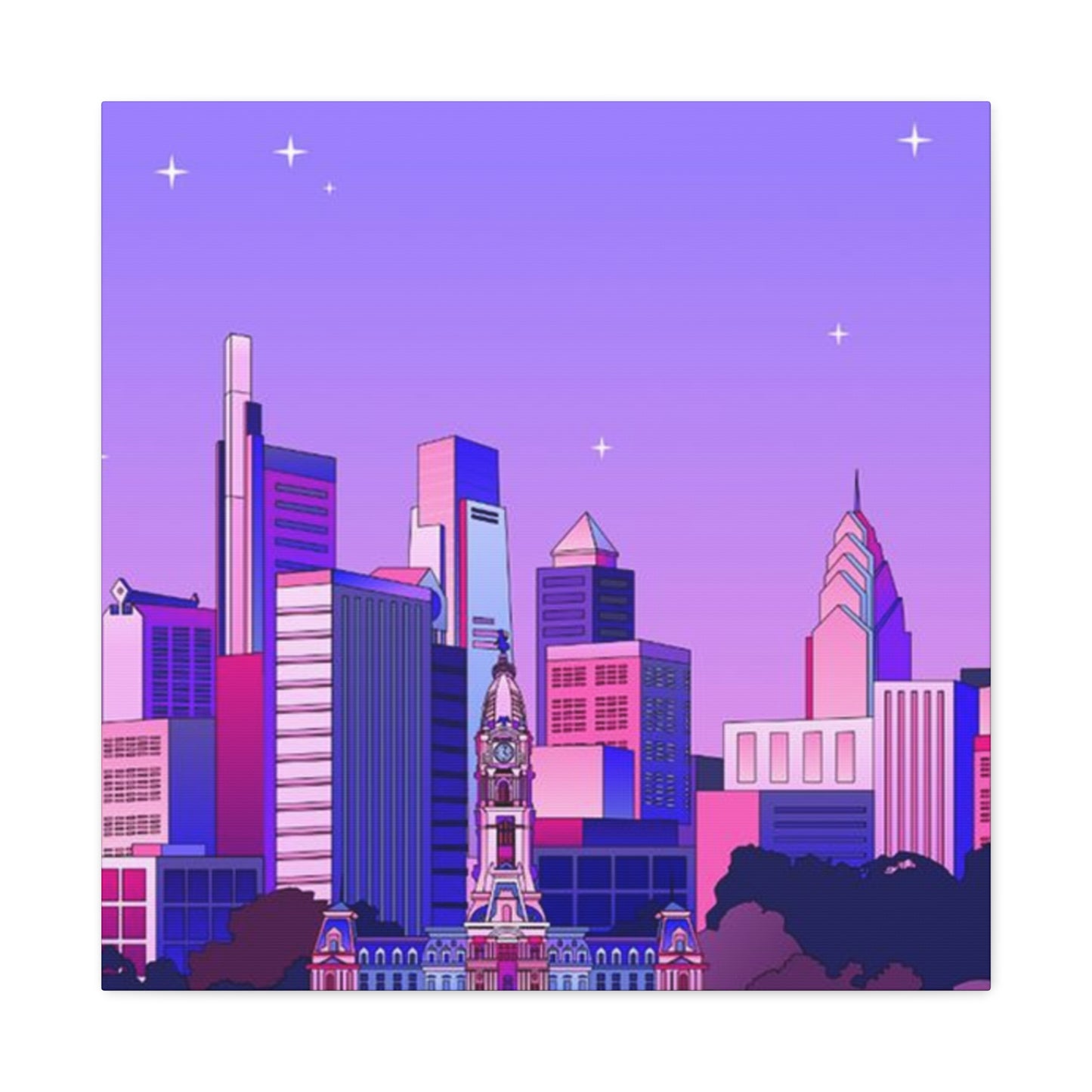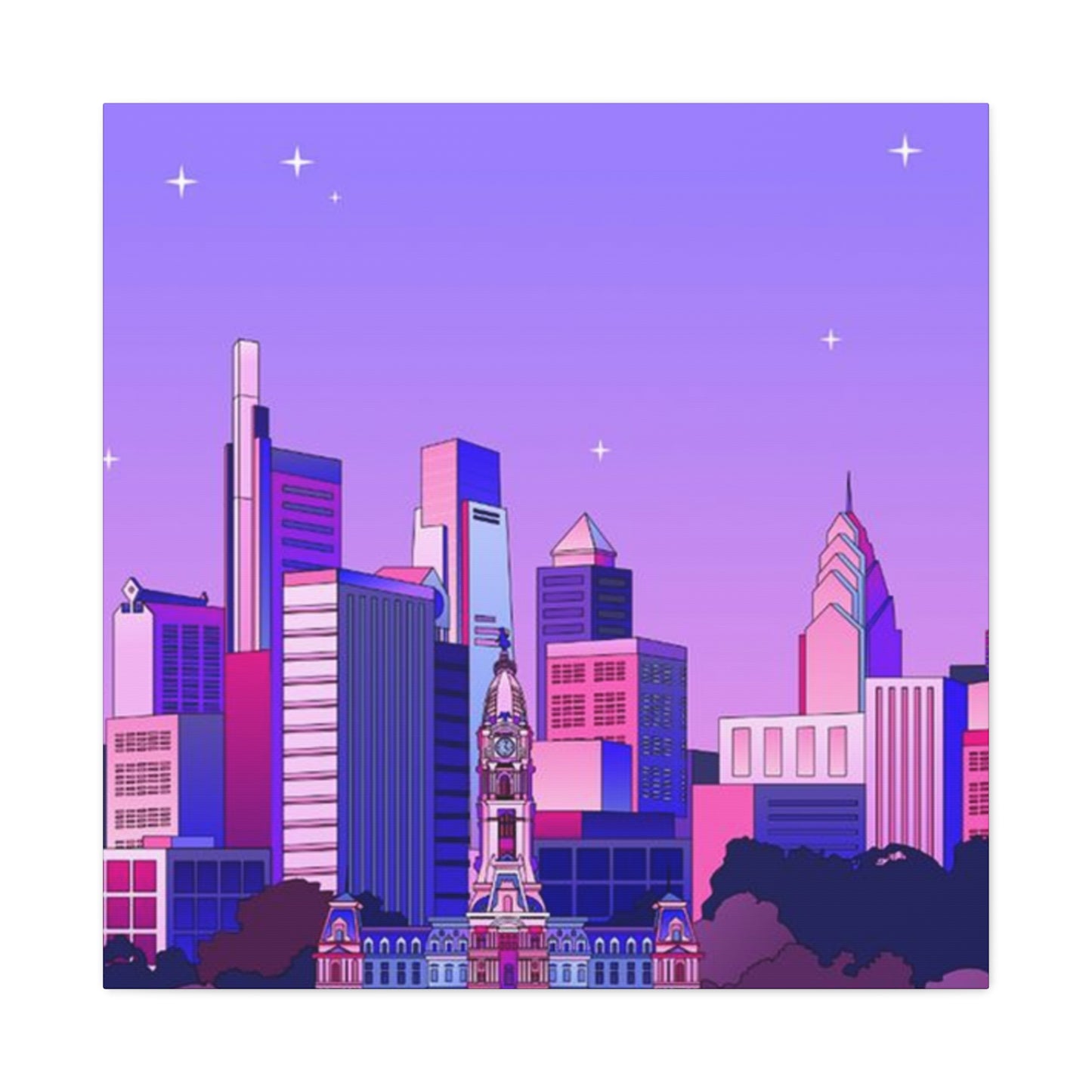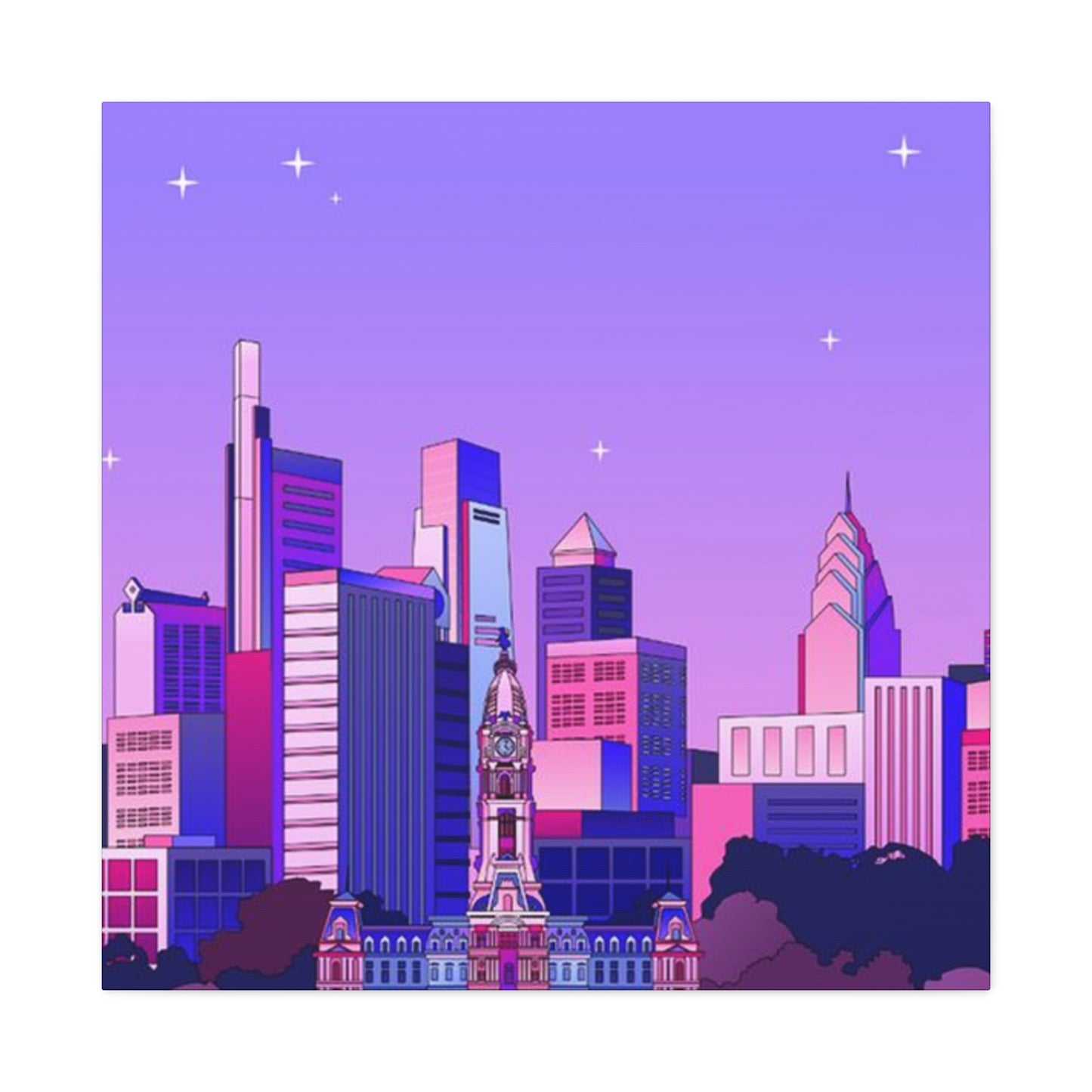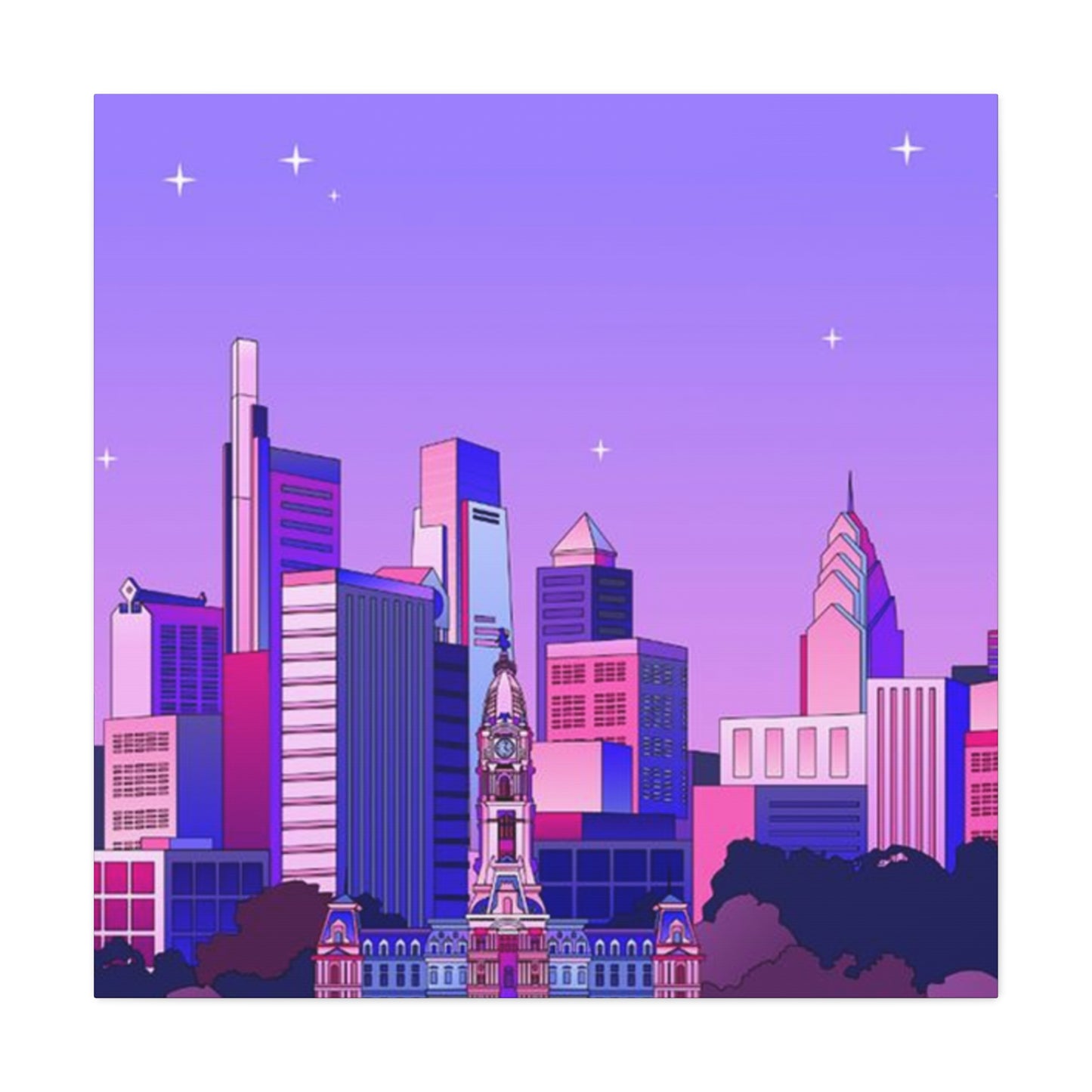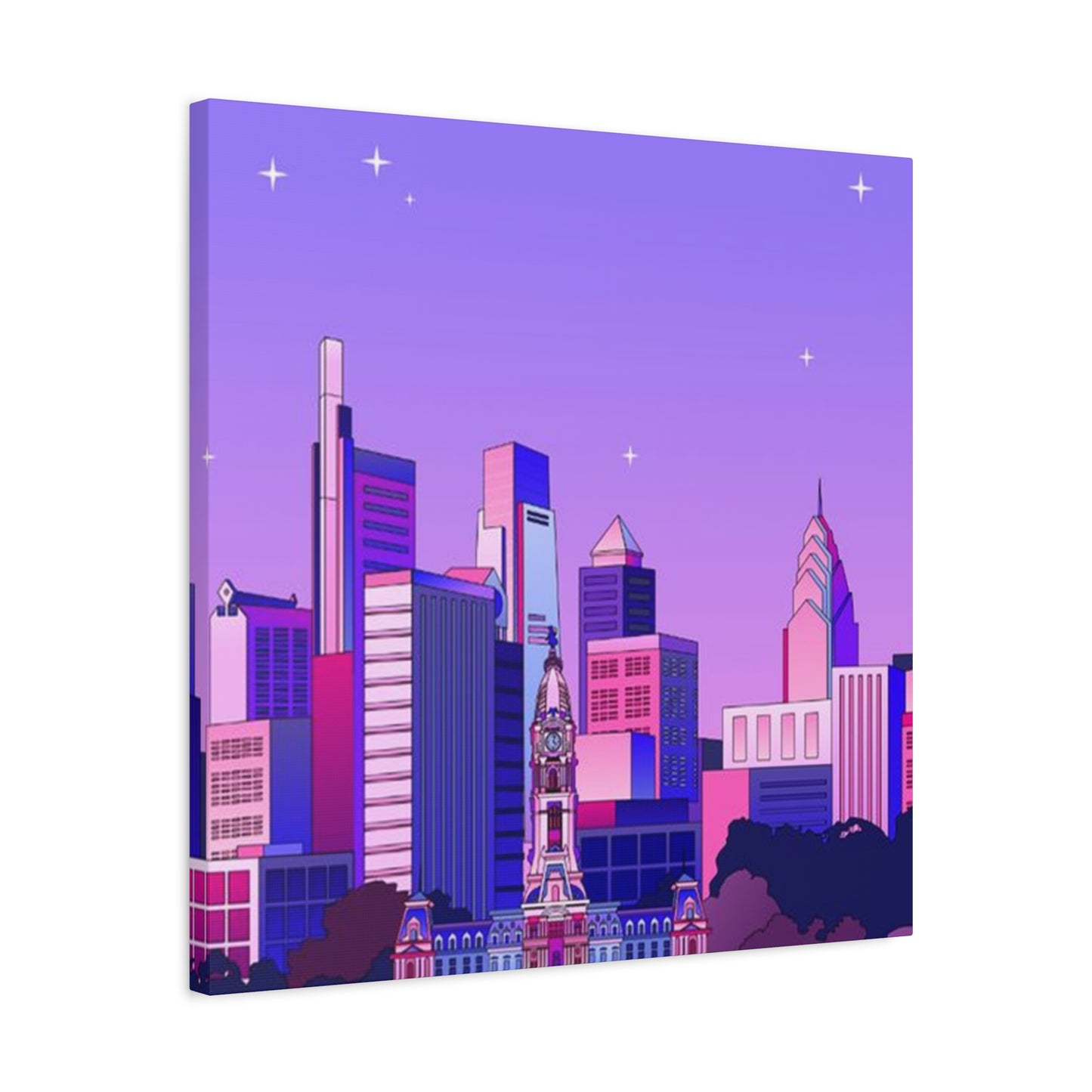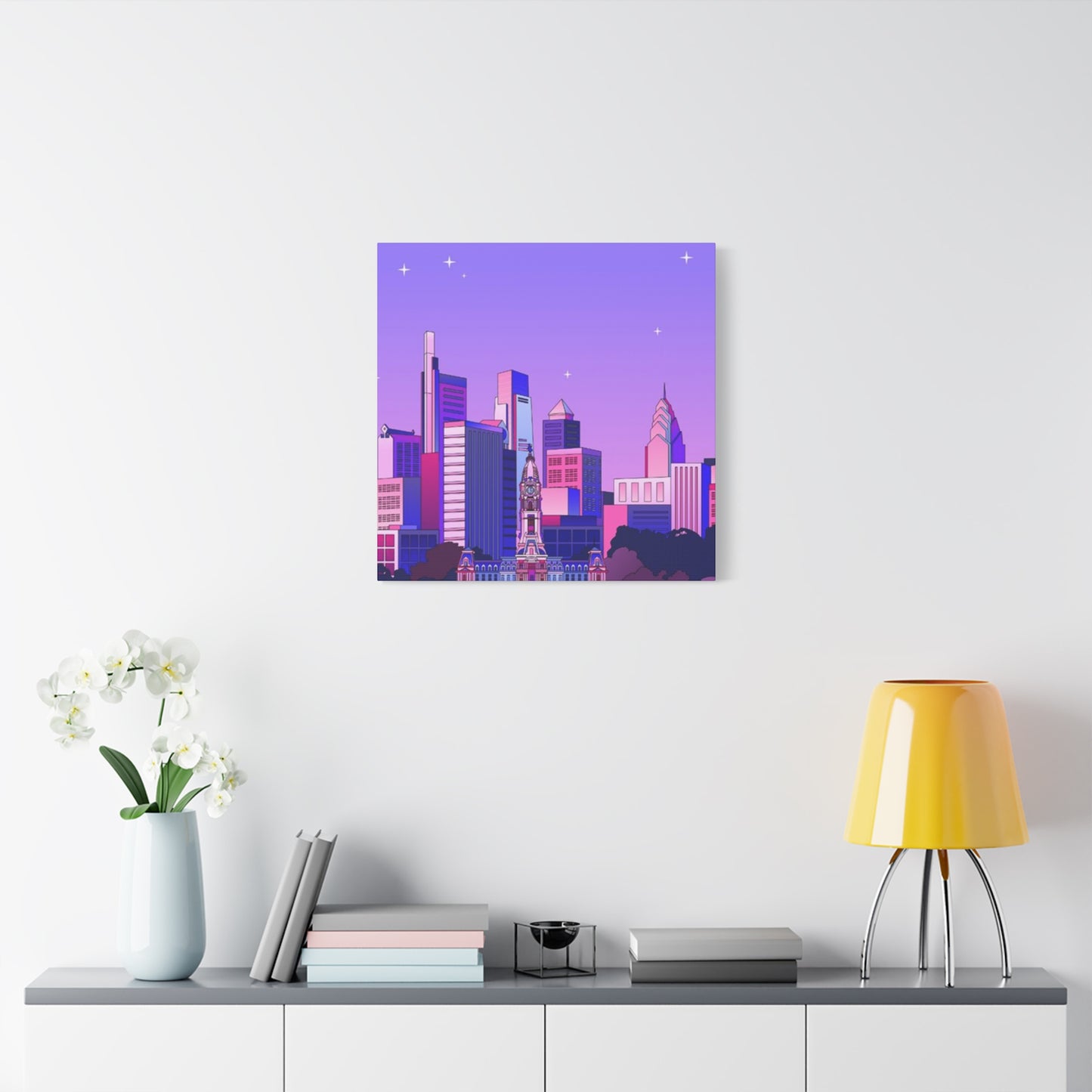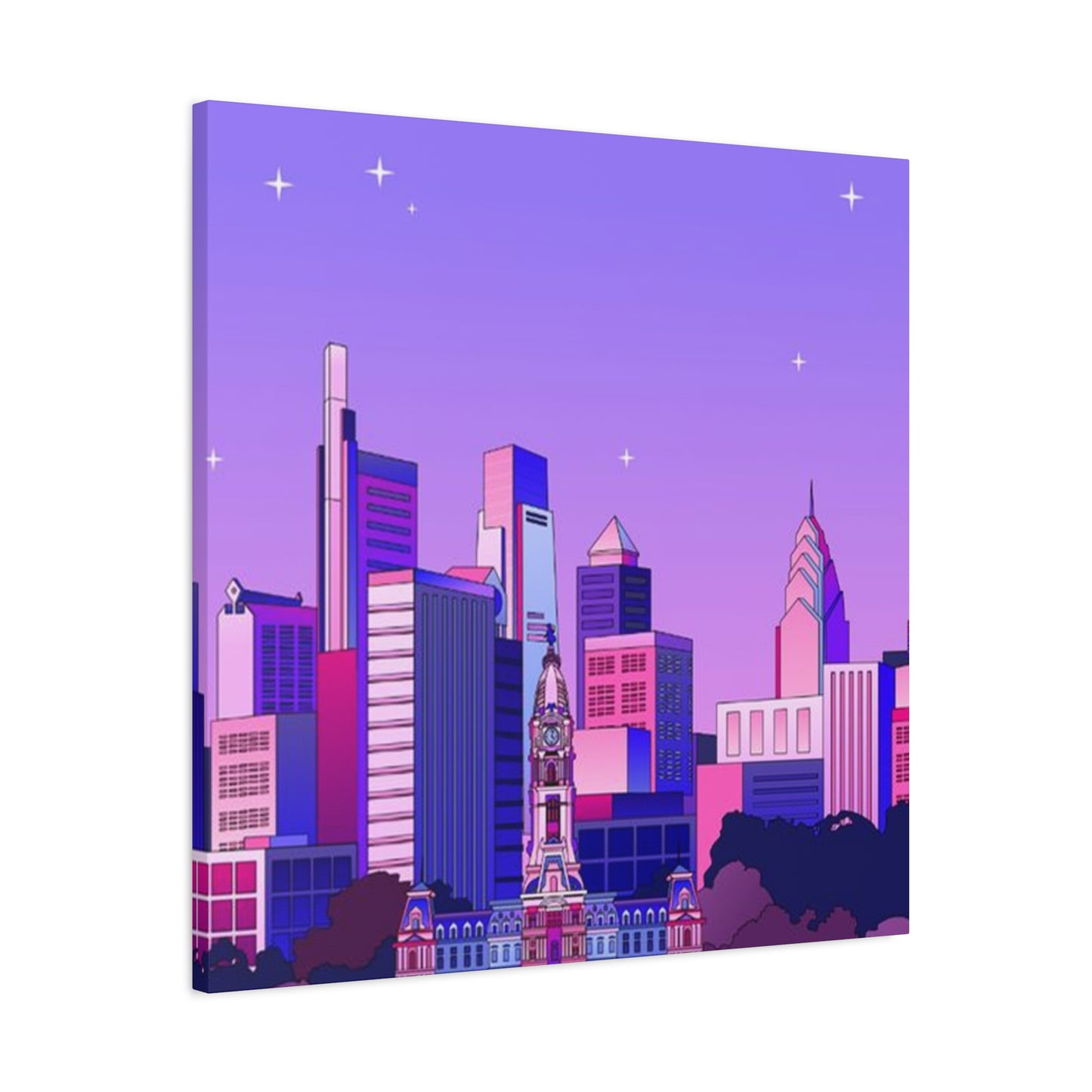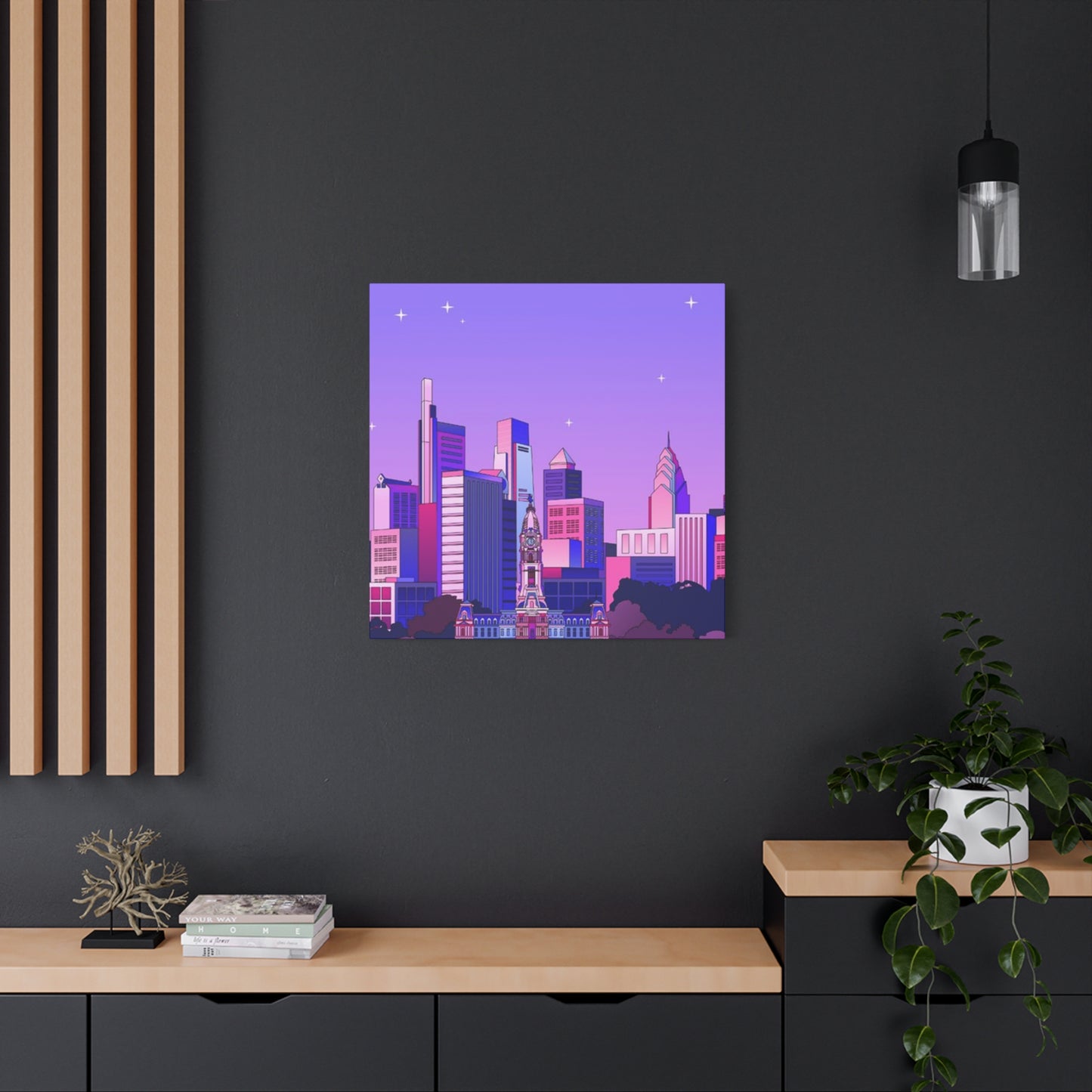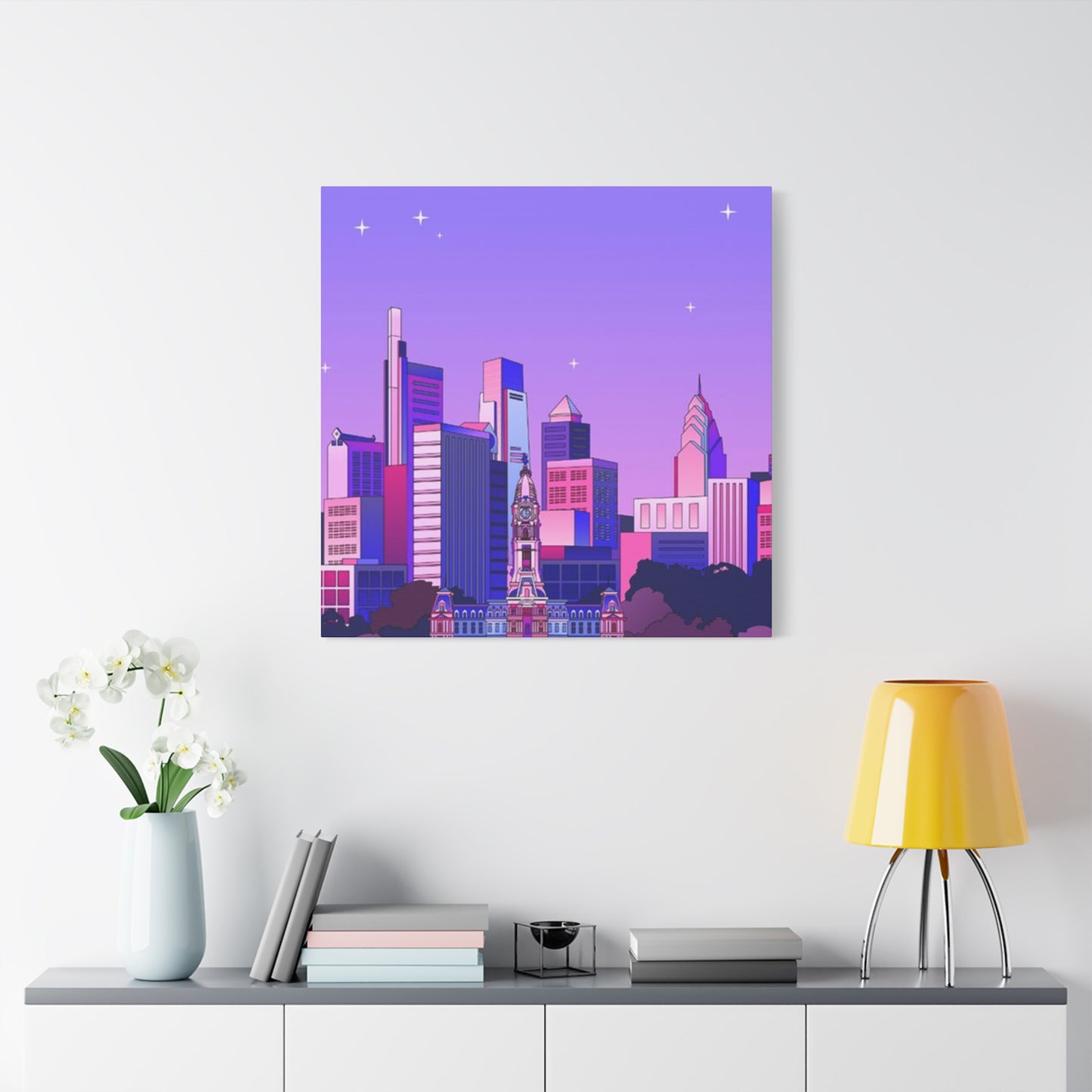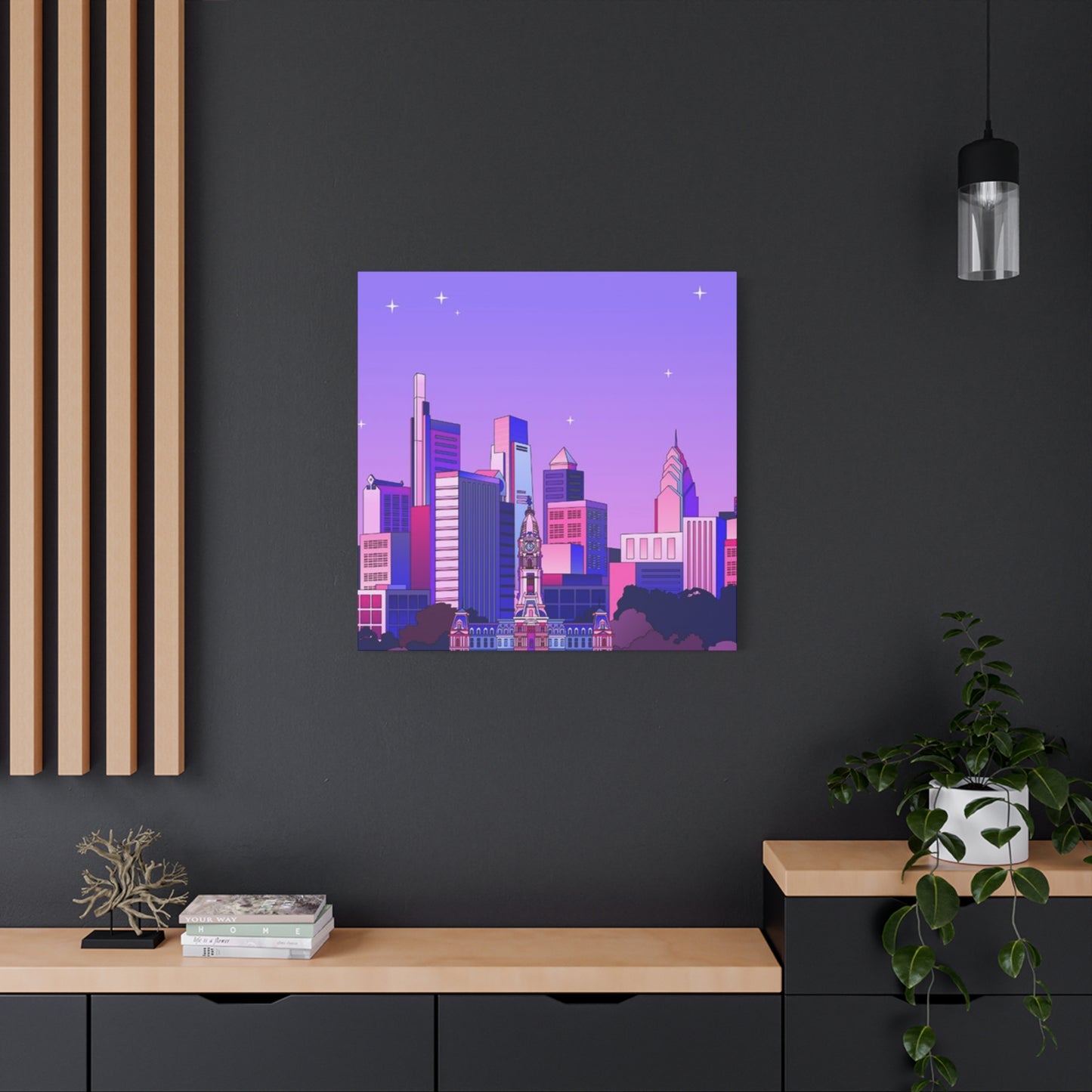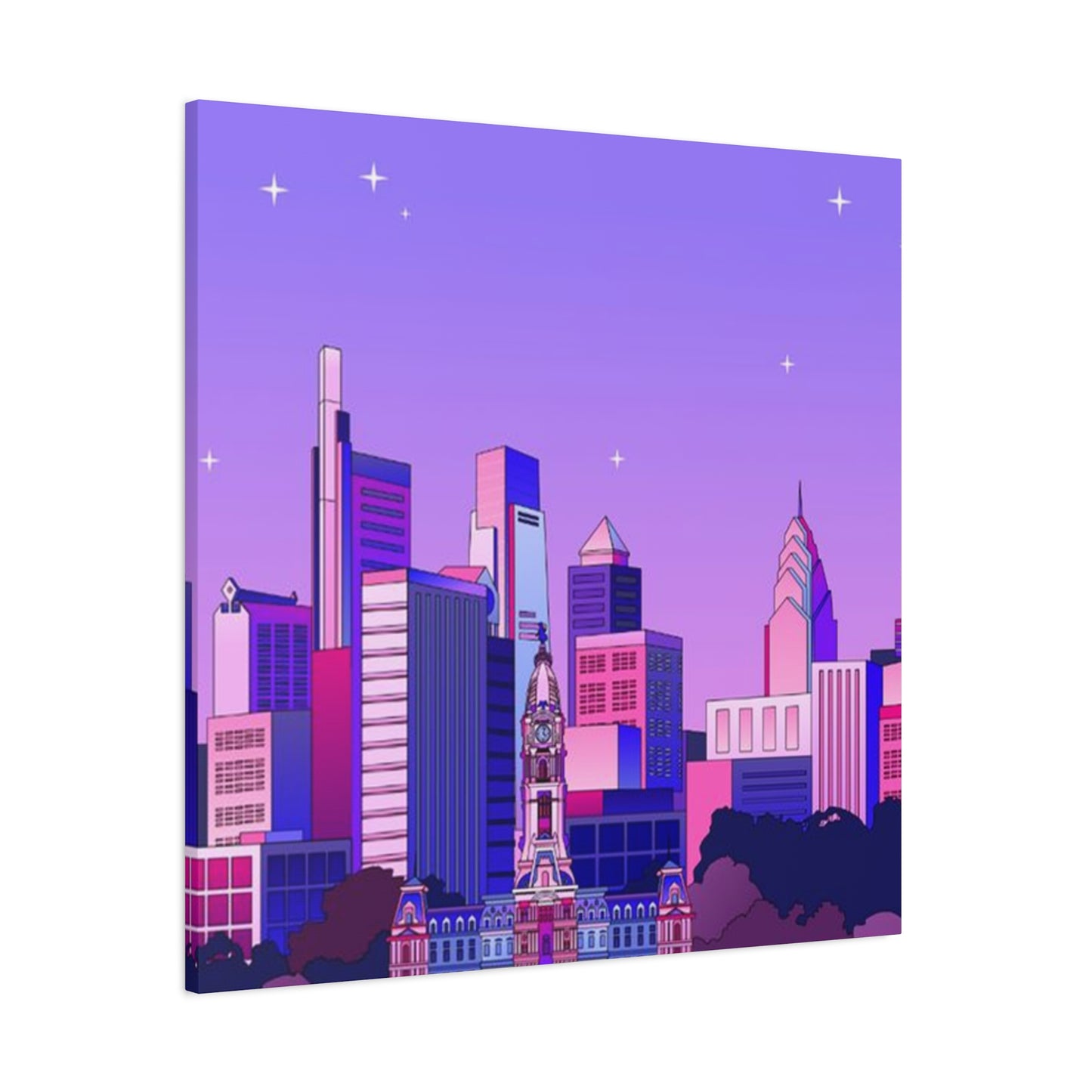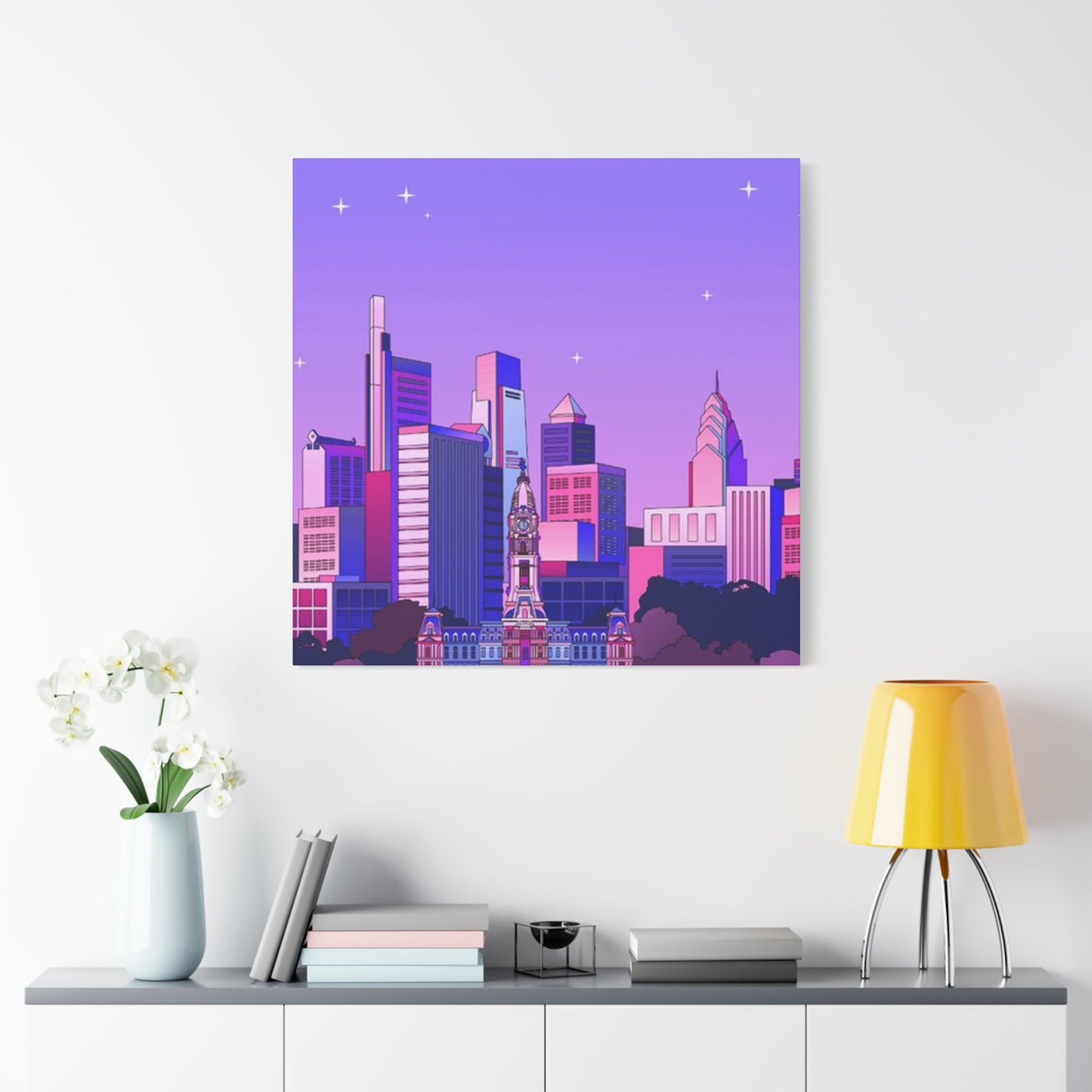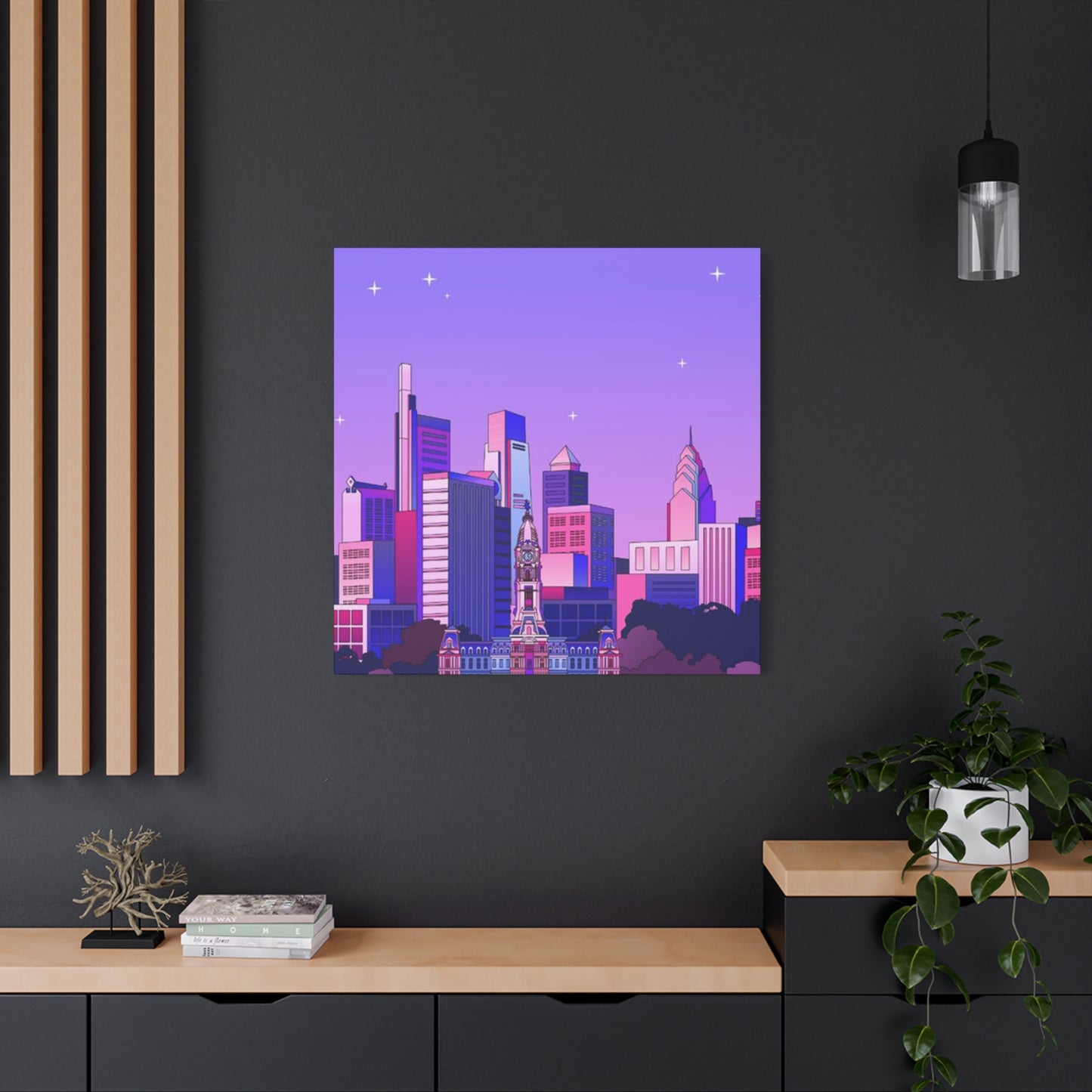Philadelphia Poster Wall Art: Transforming Spaces with Urban Soul and Historic Charm
Philadelphia stands as one of America's most culturally rich cities, blending revolutionary history with contemporary urban energy. For those who call this city home or simply admire its distinctive character, incorporating Philadelphia-themed wall art into living spaces offers a meaningful way to celebrate its legacy. From the iconic Liberty Bell to the modern skyline that stretches along the Delaware River, artistic interpretations of this city bring depth, personality, and regional pride to any interior setting.
The appeal of city-inspired décor extends beyond simple decoration. These pieces serve as conversation starters, historical reminders, and personal statements about the places that shape our identities. Philadelphia's unique position in American history, combined with its vibrant modern culture, makes it particularly compelling subject matter for artistic expression. Whether you're furnishing a downtown loft, a suburban family home, or a college apartment, Philadelphia-themed artwork offers endless possibilities for creating spaces that feel both personal and culturally connected.
This comprehensive guide explores the world of Philadelphia wall art, examining everything from design aesthetics and placement strategies to the historical significance behind popular imagery. We'll delve into how these artistic pieces can transform ordinary rooms into meaningful environments that reflect both individual taste and collective urban pride.
Expressing Philadelphia Pride Through Visual Art
The concept of regional pride manifests differently across individuals, but displaying artwork that celebrates your city creates an immediate visual connection to place and community. Philadelphia pride runs particularly deep, rooted in the city's foundational role in American independence and its ongoing contributions to culture, cuisine, and innovation. Wall art featuring Philadelphia themes allows residents and admirers to express this connection in tangible, daily-visible ways.
Displaying Philadelphia-themed artwork serves multiple purposes beyond aesthetics. It communicates to visitors something essential about the homeowner's identity and values. For Philadelphia natives living elsewhere, these pieces maintain connections to home. For newcomers to the city, they represent an embrace of their adopted community. For longtime residents, they celebrate familiar landmarks with fresh artistic perspectives.
The psychological impact of surrounding yourself with imagery that holds personal meaning shouldn't be underestimated. Spaces decorated with intention feel more comfortable and authentic than those filled with generic artwork. When you select pieces that represent Philadelphia specifically, you're creating an environment that reflects your story, whether that involves growing up on South Street, attending university in University City, or simply developing a deep appreciation for what this city represents.
Philadelphia pride manifests through various artistic interpretations. Some prefer vintage-style designs that emphasize the city's colonial heritage, featuring Independence Hall in sepia tones or historical typography reminiscent of Revolutionary-era documents. Others gravitate toward bold contemporary designs that capture the energy of modern Philadelphia through abstract color palettes and geometric representations of the skyline. Still others appreciate photographic realism that documents specific neighborhoods or architectural details with precision.
The beauty of expressing regional pride through wall art lies in its versatility. Unlike wearing team apparel or displaying overt symbols, sophisticated artwork allows you to celebrate Philadelphia in ways that integrate seamlessly with diverse interior design schemes. A minimalist line drawing of the city skyline works beautifully in a Scandinavian-inspired space, while a vibrant Pop Art interpretation of a cheesesteak complements eclectic bohemian décor. The key is finding pieces that honor both your connection to Philadelphia and your personal aesthetic preferences.
Community connection represents another dimension of displaying Philadelphia artwork. When visitors recognize local landmarks or neighborhoods in your décor, it creates immediate common ground for conversation. These shared reference points build social bonds and reinforce the sense of belonging to a larger urban community. In an increasingly mobile society where people frequently relocate, maintaining visual connections to place helps create stability and rootedness.
Celebrating the City of Brotherly Love Through Artistic Expression
Philadelphia's nickname, the City of Brotherly Love, derives from the Greek words "philos" (loving) and "adelphos" (brother), a name chosen by founder William Penn to reflect his vision of religious tolerance and peaceful coexistence. This foundational ethos permeates the city's character even today, making it particularly meaningful subject matter for artistic interpretation.
Artwork that celebrates this theme often emphasizes community, diversity, and human connection alongside architectural elements. Some designs incorporate the city motto directly, using typography as a design element that pairs with visual imagery. Others take more subtle approaches, using color palettes and compositional choices that evoke warmth, inclusivity, and historical significance.
The concept of brotherly love translates visually through various artistic strategies. Neighborhood scenes depicting diverse populations interacting on city streets capture the democratic spirit Penn envisioned. Representations of community gatherings, street festivals, and public spaces like Rittenhouse Square or Penn's Landing emphasize the social fabric that defines urban life. Even straightforward architectural renderings can evoke this theme when they highlight buildings and spaces where communities have gathered for generations.
Historical artwork celebrating Philadelphia often focuses on moments when these values were tested and affirmed, particularly during the Revolutionary era when concepts of liberty and equality were debated in the city's meeting halls and taverns. Modern interpretations might reference civil rights history, labor movements, or contemporary social progress, connecting past ideals to ongoing struggles for justice and inclusion.
For those who appreciate this aspect of Philadelphia's identity, selecting artwork that honors these values adds layers of meaning to home décor. A print featuring the words "City of Brotherly Love" in vintage typography becomes more than decoration when it prompts reflection on what those words mean in contemporary context. An artistic rendering of a neighborhood mural project celebrates not just visual beauty but community collaboration and local artistic talent.
The universality of themes like community, tolerance, and social connection makes this category of Philadelphia artwork particularly appealing even to those without direct ties to the city. The values Philadelphia's nickname represents transcend geography, allowing people anywhere to appreciate and display these pieces as reminders of ideals worth celebrating. This broader relevance expands the potential audience for Philadelphia-themed artwork while maintaining authentic connections to the city's specific history and character.
Artistic styles that capture the spirit of brotherly love range from folk art traditions that emphasize warmth and accessibility to sophisticated contemporary designs that engage with complex social themes. Choosing pieces that resonate personally ensures that your space reflects not just aesthetic preferences but also the values that matter most to you.
Contemporary Philadelphia Poster Prints for Modern Living Spaces
Modern homes demand artwork that balances aesthetic sophistication with personal meaning, and contemporary Philadelphia poster prints fulfill both requirements beautifully. These pieces reimagine the city through current design sensibilities, employing clean lines, strategic color choices, and thoughtful composition to create artwork that enhances rather than overwhelms contemporary interiors.
The defining characteristics of modern Philadelphia prints include minimalist approaches that distill complex urban landscapes into essential elements. A city skyline might be rendered as a series of geometric shapes in a limited color palette, creating visual impact through simplicity rather than detail. Iconic buildings like City Hall or the Comcast Technology Center become abstract forms that suggest rather than literally depict their real-world counterparts.
Typography plays a significant role in contemporary Philadelphia poster design. The city name itself becomes a graphic element, with designers exploring various fonts, scales, and placements to create visual interest. Some designs overlay text across photographic or illustrated backgrounds, while others make typography the sole focus, using negative space and letter spacing to craft compositions that feel both urban and refined.
Color theory significantly influences modern Philadelphia poster aesthetics. Many contemporary designs employ restrained palettes featuring neutrals accented with one or two bold hues. This approach ensures versatility, allowing the artwork to complement various interior color schemes while still making a statement. Popular color combinations include navy and gold (referencing Philadelphia's colonial heritage), black and white for maximum contrast and sophistication, or earthy tones that evoke the city's brick architecture and tree-lined streets.
Material quality distinguishes premium modern prints from mass-market alternatives. High-resolution digital printing on archival papers ensures color accuracy and longevity. Many contemporary Philadelphia prints are available on various substrates, including traditional paper, canvas, metal, and acrylic, each offering different visual and textural qualities. The choice of material should complement both the artwork's style and the room's overall design direction.
Modern Philadelphia poster prints work particularly well in specific home environments. Open-concept living areas benefit from larger-scale pieces that can hold their own against expansive walls and high ceilings. Home offices gain personality and local character when decorated with city-themed artwork that maintains professional sophistication. Bedrooms become more personal when adorned with subtle Philadelphia references that don't overwhelm the restful atmosphere. Even kitchens and dining areas can incorporate food-themed Philadelphia prints celebrating the city's culinary culture.
The accessibility of contemporary poster prints makes them ideal for various budgets and living situations. Unlike original artwork or expensive commissioned pieces, high-quality prints offer sophisticated design at accessible price points. This democratization of art allows renters, students, young professionals, and anyone else to personalize their spaces with meaningful imagery regardless of budget constraints.
Framing choices significantly impact how contemporary Philadelphia prints present in modern spaces. Sleek metal frames in black, silver, or gold complement minimalist designs, while natural wood frames add warmth to geometric compositions. Some contemporary pieces work best without traditional frames, instead being mounted directly on walls or displayed on floating shelves for a more casual, gallery-inspired presentation.
Dynamic City Views Captured on Canvas
Canvas prints offer a distinct aesthetic that elevates Philadelphia imagery from simple posters to substantial artistic statements. The texture and depth of canvas create visual interest that flat paper prints cannot match, while the material's durability makes it suitable for various home environments including high-traffic areas and spaces where conditions might affect paper-based artwork.
Philadelphia city views translate particularly well to canvas format. The medium's substantial presence suits expansive urban landscapes, allowing viewers to appreciate architectural details and compositional complexity. A panoramic view of the city skyline stretched across a large canvas becomes a focal point that anchors an entire room's design. The three-dimensional quality of gallery-wrapped canvas, where the image continues around the sides, creates a finished, professional appearance that eliminates the need for traditional framing.
Artistic approaches to Philadelphia city views on canvas vary widely. Photographic prints capture realistic detail, preserving the actual appearance of buildings, streets, and landmarks with accuracy. These pieces appeal to those who appreciate documentary authenticity and want representations that closely match their memories and experiences of the city. High-resolution photography printed on canvas gains an artistic quality through texture and scale, transforming straightforward images into sophisticated décor.
Painted interpretations offer different appeal, introducing artistic interpretation and emotional resonance that photography alone cannot achieve. Some artists work in impressionistic styles, using loose brushwork and vibrant color to capture the energy and atmosphere of Philadelphia rather than precise architectural details. Others employ more realistic painting techniques that still allow for creative interpretation through lighting choices, perspective, and emphasis. The visible brushstrokes and color variations in painted canvas pieces add human touch and originality that reproductions can only approximate.
Digital art printed on canvas represents a middle ground between photography and painting. Digital artists create Philadelphia city views using illustration software, often combining photographic elements with hand-drawn components, texture overlays, and creative color manipulation. These pieces can achieve effects impossible through traditional media, from hyperrealistic detail to fantastical interpretations that reimagine Philadelphia through surreal or stylized lenses.
The boldness of canvas as a medium makes it particularly suitable for making design statements. A single large canvas displaying a dramatic Philadelphia cityscape can transform a bland wall into a captivating feature. Triptychs or multi-panel canvas arrangements allow for even greater impact, breaking a single expansive city view across multiple pieces that create rhythm and visual movement across wall space.
Color vibrancy represents another advantage of canvas prints. Modern printing techniques achieve rich, saturated colors that remain stable over time when using quality inks and materials. Philadelphia city views benefit from this capability, as the interplay of natural and artificial light in urban landscapes, the varied colors of buildings and streets, and the atmospheric effects of weather and time of day all translate effectively through high-quality canvas printing.
Installation simplicity makes canvas prints practical choices for those who want substantial artwork without complicated mounting processes. Gallery-wrapped canvases come ready to hang, with the frame built into the structure. This self-contained quality makes them ideal for renters or anyone who prefers straightforward decorating solutions. The relatively lightweight nature of canvas compared to framed glass-covered prints also simplifies handling and reduces shipping costs for online purchases.
Historical Philadelphia Captured in Poster Format
Philadelphia's extraordinary historical significance provides endless inspiration for poster art that educates while decorating. As the birthplace of American independence, the city witnessed world-changing events that continue to resonate centuries later. Poster art celebrating this history allows people to surround themselves with visual reminders of these foundational moments while adding distinguished character to their living spaces.
Historical Philadelphia poster designs draw from various aesthetic traditions. Vintage-inspired pieces mimic the appearance of Revolutionary-era broadsheets, using period-appropriate typography, aged paper textures, and color palettes dominated by browns, creams, and muted reds. These designs might feature historical maps, reproductions of founding documents, or illustrated scenes of important events like the signing of the Declaration of Independence or the Constitutional Convention.
Architectural heritage forms another rich category of historical Philadelphia posters. Buildings like Independence Hall, Carpenters' Hall, and Christ Church represent not just architectural beauty but historical importance. Poster designs featuring these structures often emphasize their Georgian and Federal-style architectural details through careful illustration or photography that highlights symmetry, proportion, and classical elements. Text elements might include construction dates, historical significance, or architectural terminology that adds educational value.
Historical figure portraiture represents another approach to history-themed Philadelphia posters. Benjamin Franklin, the city's most famous historical resident, appears frequently in artwork ranging from reproductions of historical portraits to modern stylized interpretations. Other founding fathers associated with Philadelphia, including George Washington, Thomas Jefferson, and John Adams, also feature in poster designs that place them in historical context through period dress, settings, and accompanying text.
The visual language of historical Philadelphia posters often incorporates symbols and iconography associated with early America. Eagles, liberty bells, stars, stripes, and colonial-era ornamental flourishes appear as design elements that reinforce historical themes. These symbols carry deep meaning while functioning as effective visual shorthand that immediately communicates the historical nature of the content.
Educational value distinguishes many historical Philadelphia posters from purely decorative alternatives. Timeline designs that chronicle important events, annotated maps showing historical sites, and informational graphics explaining historical processes all serve dual purposes as both artwork and learning tools. These pieces work particularly well in educational settings, home offices, or family spaces where they might spark conversations about history and civic engagement.
Authenticity concerns arise with historical poster designs, particularly regarding reproductions of actual historical documents or imagery. High-quality historical posters should credit sources and distinguish between authentic reproductions and modern artistic interpretations inspired by historical themes. This transparency matters both for intellectual honesty and for helping buyers understand exactly what they're purchasing.
The appeal of historical Philadelphia posters extends across age groups and demographics. History enthusiasts naturally gravitate toward these pieces, but they also attract those interested in traditional design aesthetics, educators seeking meaningful classroom décor, and anyone who appreciates the weight and gravitas that historical imagery brings to living spaces. The timeless quality of historical themes ensures these pieces remain relevant regardless of changing design trends.
Placement considerations for historical Philadelphia posters often differ from contemporary alternatives. These pieces frequently work best in settings that complement their traditional character, such as home libraries, studies, dining rooms, or entryways where they set a tone of substance and heritage. Pairing historical posters with appropriate frames, particularly those with classical molding or antiqued finishes, enhances their impact and creates cohesive presentations that honor both the content and the aesthetic tradition it represents.
Modern Urban Vibes in Philadelphia Wall Art
Contemporary Philadelphia pulses with creative energy, cultural diversity, and urban vitality that differs markedly from its historical persona. Modern wall art capturing this aspect of the city celebrates its current identity as a thriving metropolis with world-class dining, vibrant arts scenes, innovative architecture, and dynamic neighborhoods. This category of artwork appeals particularly to younger demographics and urban dwellers who identify more with present-day Philadelphia than its colonial past.
Street art and mural culture feature prominently in modern Philadelphia wall art. The city's extensive mural program has transformed blank walls throughout various neighborhoods into massive public artworks, and this aesthetic translates effectively into home décor. Prints and canvases featuring abstract compositions, bold colors, and contemporary artistic techniques evoke the energy of neighborhoods like Fishtown, Northern Liberties, and the Italian Market, where street art contributes significantly to local character.
Modern Philadelphia artwork often emphasizes specific neighborhoods rather than generic citywide imagery. Each area of Philadelphia maintains distinct identity, and artwork celebrating these differences resonates with residents who identify strongly with their particular communities. Designs might incorporate neighborhood names in stylized typography, illustrate characteristic buildings or businesses, or use color schemes and visual motifs associated with specific areas.
Food culture represents another rich vein of modern Philadelphia wall art. The city's culinary scene extends far beyond the famous cheesesteak, encompassing diverse international cuisines, innovative contemporary restaurants, and beloved local institutions. Artwork celebrating this aspect of Philadelphia life might feature illustrated food items, restaurant interiors, Reading Terminal Market scenes, or typography-based designs incorporating food-related phrases and local terminology.
Contemporary architecture provides striking subject matter for modern Philadelphia wall art. Recent additions to the skyline, including the Comcast Technology Center and various projects by renowned architects, represent the city's forward-looking identity. Photographs and illustrations of these structures appeal to those who appreciate modern design and see Philadelphia as an evolving urban center rather than a historical artifact.
Music and performance culture feature in Philadelphia artwork celebrating venues like the Met Philadelphia, Union Transfer, and various smaller clubs that have hosted legendary performances. Designs might reference specific musical genres associated with the city, from jazz and soul to hip-hop and indie rock, using visual aesthetics that evoke particular musical traditions and cultural moments.
Sports culture, while sometimes overlapping with more obvious team merchandise, can be incorporated into sophisticated modern wall art through subtle references, color palettes, and imagery that celebrates Philadelphia's passionate fan base without resorting to literal team logos. Abstract designs in team colors, artistic interpretations of game-day energy, or sophisticated typography featuring rallying cries all allow sports enthusiasts to express their fandom through home décor that maintains design integrity.
The aesthetic of modern Philadelphia wall art tends toward bold, confident design choices. Bright colors, strong contrasts, contemporary typography, and dynamic compositions reflect the energy and diversity of urban life. These pieces make statements rather than blending into backgrounds, appealing to those who want their décor to reflect personality and contemporary sensibilities.
Installation approaches for modern Philadelphia wall art often embrace casualness and flexibility. Gallery walls combining multiple pieces in various sizes create curated, evolving displays that can change over time. Lean-to arrangements where artwork rests on shelves or mantels rather than hanging on walls suit the informal sophistication many urban dwellers prefer. Mixing Philadelphia-themed pieces with other artwork prevents spaces from feeling overly themed while still maintaining meaningful local connections.
Artistic Tributes to Philadelphia's Cultural Identity
Philadelphia's cultural identity encompasses far more than geography and history, extending into realms of creativity, innovation, and community expression that artists interpret through various mediums and styles. Artwork that pays tribute to this broader cultural landscape captures something essential about what makes Philadelphia distinctive beyond its famous landmarks and historical sites.
Literary heritage offers rich material for Philadelphia artistic tributes. The city's connections to writers from Edgar Allan Poe to contemporary authors provide opportunities for artwork that celebrates written word and reading culture. Designs might incorporate literary quotes, stylized representations of books and libraries, or imagery referencing specific works associated with Philadelphia settings. The Free Library of Philadelphia's magnificent architecture and cultural importance make it particularly compelling subject matter for artistic interpretation.
Educational institution imagery celebrates Philadelphia's role as a major academic center. With numerous universities and colleges, the city maintains youthful energy and intellectual vitality that artists capture through various approaches. Campus scenes, architectural details of historic academic buildings, and designs referencing school mottos and traditions all serve as artistic tributes to Philadelphia's educational landscape.
Scientific and medical heritage forms another dimension of Philadelphia's cultural identity worthy of artistic celebration. As home to pioneering medical schools and research institutions, the city contributed significantly to human knowledge and wellbeing. Artwork referencing this legacy might incorporate anatomical illustrations, scientific instruments, historical medical imagery, or designs that honor specific institutions and their contributions.
Cultural institutions like museums, theaters, and performance venues inspire artwork that celebrates Philadelphia's arts ecosystem. The Philadelphia Museum of Art, with its iconic steps and world-class collections, appears frequently in city artwork. Other institutions including the Barnes Foundation, the Academy of Music, and various theaters and galleries provide settings and subjects for artistic interpretation.
Community festivals and cultural celebrations represent another avenue for artistic tributes to Philadelphia. Events like the Mummers Parade, various neighborhood street festivals, and cultural celebrations reflecting the city's diverse populations all inspire artwork that captures celebratory spirit and community cohesion. These pieces often feature bright colors, energetic compositions, and imagery showing people engaged in collective joy and cultural expression.
Artisan traditions and craft culture in Philadelphia inspire tributes that honor makers and their work. The city's manufacturing heritage, contemporary maker spaces, and ongoing craft traditions provide material for artwork celebrating creativity, skill, and material culture. Designs might feature tools, processes, or finished objects associated with various crafts, or take more abstract approaches that evoke the spirit of making and creating.
Green spaces and natural features within the urban landscape inspire artwork celebrating Philadelphia's commitment to parks and environmental stewardship. Fairmount Park's extensive trail systems, Wissahickon Valley's natural beauty, and various neighborhood parks and gardens all provide settings for artwork that shows Philadelphia as a city balancing urban density with natural spaces. These pieces often emphasize trees, water features, and the interplay between built and natural environments.
Diversity and multiculturalism represent perhaps the most important dimensions of contemporary Philadelphia's cultural identity. Artwork celebrating this aspect might reference various ethnic neighborhoods, cultural traditions, or use visual approaches that emphasize variety, difference, and the beauty of cultural mixing. These tributes acknowledge that Philadelphia's identity emerges from diverse populations and traditions rather than any single historical or cultural narrative.
Urban Charm Captured in Philadelphia Poster Décor
Urban charm represents an elusive quality that distinguishes appealing cities from merely functional ones. Philadelphia possesses this quality in abundance through its combination of historic architecture, human-scaled streets, neighborhood character, and the accumulated patina of centuries of urban life. Poster décor capturing this charm translates these intangible qualities into visual form that brings urban sophistication into residential spaces.
Neighborhood character forms the foundation of Philadelphia's urban charm. Unlike cities dominated by modernist towers or suburban sprawl, Philadelphia maintains distinct neighborhood identities expressed through architecture, street life, and local institutions. Poster designs celebrating specific neighborhoods capture their particular character through careful attention to visual details that residents immediately recognize. A depiction of South Street's eclectic storefronts communicates different urban charm than an illustration of tree-lined Delancey Street in Society Hill or the industrial-turned-artistic character of Fishtown.
Architectural detail represents a crucial component of urban charm that poster art can emphasize. Philadelphia's rowhouse architecture, with its brick facades, marble steps, and human-scaled proportions, creates streetscapes that feel distinctly different from cities dominated by other building types. Poster designs that focus on these architectural details through close-up photography, detailed illustration, or abstract interpretations help viewers appreciate elements they might overlook in everyday life. Bay windows, decorative cornices, iron railings, and door surrounds all contribute to visual richness that artists can highlight.
Street-level perspectives capture urban charm more effectively than aerial or distant views. Artwork showing Philadelphia from pedestrian eye level emphasizes human experience of urban space rather than abstracting the city into skylines and statistics. These ground-level views might show shop windows, sidewalk cafes, street vendors, or tree canopies arching over narrow streets, creating intimate relationships between viewers and depicted spaces.
Seasonal variations in Philadelphia's appearance provide opportunities for poster designs that capture urban charm in different conditions. Autumn colors in tree-lined streets, winter snow softening architectural edges, spring blossoms in neighborhood parks, and summer street life all represent distinct aspects of urban experience worth celebrating through artwork. Seasonal Philadelphia posters allow residents to rotate décor throughout the year while maintaining cohesive city themes.
Time of day significantly affects urban atmosphere, and poster designs that capture specific lighting conditions communicate different moods and energies. Dawn light on empty streets suggests contemplative solitude, midday sunshine emphasizes activity and energy, golden-hour illumination adds warmth and nostalgia, and nighttime views featuring streetlights and illuminated windows create atmosphere and mystery. Artists working with Philadelphia imagery often deliberately choose lighting conditions that support their intended emotional impact.
Human presence and activity contribute essentially to urban charm, distinguishing lively neighborhoods from abandoned districts. Poster designs might include figures engaged in characteristic urban activities like walking dogs, sitting on stoops, tending gardens, or gathering in public spaces. Even when people aren't explicitly shown, evidence of human presence through businesses, decorations, or personal touches on buildings suggests the life that makes neighborhoods appealing.
Color palettes heavily influence whether poster designs successfully convey urban charm. Philadelphia's characteristic brick architecture suggests earthy color schemes featuring reds, browns, and warm grays. Green trees and occasional painted surfaces introduce color accents that prevent monotony. Artists often emphasize these natural color relationships or reinterpret them through more stylized approaches that maintain connections to actual urban color experiences.
Scale and proportion matter significantly in poster designs meant to capture urban charm. Oversized posters featuring small architectural details create interesting reversals of scale that prompt viewers to reconsider familiar elements. Conversely, comprehensive neighborhood views require sufficient size to maintain detail legibility while showing broader urban contexts. Matching poster scale to depicted subject matter ensures designs communicate effectively.
Philadelphia Landmarks Reimagined Through Contemporary Art
Philadelphia's landmarks achieve iconic status through historical significance, architectural distinction, and cultural prominence. While traditional representations of these landmarks maintain importance, contemporary artistic reimaginings offer fresh perspectives that honor familiarity while introducing innovation and personal interpretation. This approach appeals to those who want to celebrate Philadelphia landmarks without resorting to conventional tourist imagery.
Abstraction represents one powerful approach to reimagining Philadelphia landmarks. Rather than depicting Independence Hall or the Liberty Bell with photographic accuracy, artists reduce these subjects to essential forms, colors, and compositional elements. A geometric abstraction might represent Independence Hall through simplified shapes suggesting its tower and symmetrical facade, using color blocks and lines rather than architectural detail. This approach creates sophisticated artwork that references familiar landmarks while functioning as contemporary design objects.
Mixed media techniques allow artists to layer different elements into landmark representations, creating complexity and visual interest beyond single-medium approaches. A canvas featuring City Hall might combine photography, painted elements, digital manipulation, and text overlays to create a multi-dimensional interpretation that engages viewers through varied textures and techniques. These pieces reward extended viewing as different layers reveal themselves over time.
Unexpected perspectives challenge conventional ways of seeing familiar landmarks. Most Philadelphia landmark photography follows established viewpoints that have been replicated countless times. Contemporary artists seek alternative angles, extreme close-ups of architectural details, or views from unusual vantage points that defamiliarize iconic structures and prompt fresh appreciation. A worm's-eye view of City Hall's tower or an extreme detail of the Liberty Bell's crack offers novelty while maintaining connection to recognizable subjects.
Color manipulation represents another strategy for reimagining landmarks. While traditional representations maintain actual colors, contemporary artists might employ unexpected palettes that transform familiar structures. Independence Hall rendered in vibrant purples and oranges creates striking visual impact while remaining recognizable through form and proportion. Pop Art-influenced approaches using flat, bright colors and high contrast pay homage to artistic movements while applying them to specifically Philadelphia subjects.
Textual integration combines landmark imagery with words, phrases, and typography to create layered meanings. A representation of the Liberty Bell might incorporate text referencing freedom, justice, or specific historical quotes, adding conceptual depth to visual elements. Typography itself can form landmark shapes, with words arranged to create silhouettes of buildings or objects, merging text and image into unified compositions.
Collage and assemblage techniques allow artists to combine multiple Philadelphia landmarks into single compositions that capture broader city identity. Rather than focusing on individual structures, these pieces create visual conversations between different iconic elements, suggesting connections and relationships that illuminate something essential about Philadelphia as a complete entity rather than a collection of separate landmarks.
Seasonal and temporal reimaginings show landmarks in unusual conditions or combine different time periods into single compositions. Independence Hall might appear in snowstorm conditions rarely photographed, or an artist might overlay historical and contemporary images of the same location to emphasize change and continuity. These temporal manipulations add conceptual sophistication to straightforward landmark representation.
Material innovation expands possibilities for landmark artwork beyond traditional canvas and paper. Metal prints create industrial-looking pieces well-suited to contemporary interiors. Wood-mounted images introduce organic warmth that contrasts interestingly with urban subject matter. Acrylic face-mounting produces luminous, jewel-like pieces with exceptional depth and color saturation. Each material brings distinctive aesthetic qualities that transform how landmark imagery presents in home environments.
Skyline Inspiration for City Enthusiasts
City skylines represent modern urban identity through their distinctive profiles of towers and structures. Philadelphia's skyline, while perhaps less internationally famous than New York or Chicago, maintains distinctive character that residents and enthusiasts appreciate for its specific combination of historical and contemporary architecture. Skyline artwork appeals particularly to those who identify with urban living and appreciate cities as designed environments rather than organic landscapes.
Compositional approaches to skyline artwork significantly affect emotional impact and aesthetic success. Horizontal compositions emphasizing breadth suit the natural orientation of skylines while creating sense of expansion and openness. These wide-format pieces work particularly well above furniture like sofas and credenzas where horizontal spaces require filling. Vertical compositions focusing on select buildings or towers create different energy, drawing eyes upward and creating sense of aspiration and height appropriate to the subject matter.
Foreground elements add context and depth to skyline compositions. Philadelphia skyline views across the Schuylkill River incorporate water as foreground element, introducing reflections and horizontal lines that balance vertical architecture. Views from elevated positions might include foreground streets or buildings that create layers and guide viewers' eyes toward distant skylines. Carefully chosen foreground elements prevent skyline imagery from feeling flat or diagrammatic.
Time-specific skyline imagery captures particular moments that add emotional resonance beyond straightforward architectural documentation. Sunset and sunrise skylines feature dramatic lighting that adds warmth and atmosphere. Blue hour skylines, photographed during the transitional period between day and night when natural and artificial light balance, create mysterious beauty with deep blue skies contrasting against illuminated buildings. Night skylines transform architecture into patterns of light, emphasizing windows and structural illumination.
Seasonal variation affects skyline appearance in subtle but meaningful ways. Winter skylines appear sharper with clearer atmosphere and bare trees in foreground elements. Summer skylines might feature fuller foliage and hazier atmospheric conditions. Autumn foliage introduces warm color accents in foreground parks and trees, while spring growth suggests renewal and energy. Skyline artwork capturing specific seasons resonates particularly with those who experience these changes annually.
Weather conditions dramatically affect skyline mood and atmosphere. Dramatic storm clouds create tension and visual interest, while clear skies emphasize architecture without atmospheric distraction. Fog and mist soften skyline profiles, creating mysterious, romantic effects that transform familiar structures into abstracted forms. Rain and snow introduce additional visual elements that affect how light interacts with buildings and sky.
Artistic interpretation allows skyline artwork to transcend documentary photography. Painted skylines introduce visible brushwork and color interpretation that adds human touch and emotion. Digital illustrations can simplify or exaggerate elements for graphic impact, creating bold, poster-like designs that function as much as graphic design as representational artwork. These interpretive approaches appeal to those who want skyline imagery that clearly registers as art rather than photography.
Scale considerations significantly impact how skyline artwork functions in living spaces. Large-scale pieces create dramatic focal points that anchor entire walls, working particularly effectively in open-concept living areas with expansive wall space. Medium-scale skyline prints suit bedroom and office environments where smaller spaces require proportional artwork. Even small skyline prints can create impact when grouped in multiples or combined with other Philadelphia imagery in gallery-wall arrangements.
Philadelphia Spirit Expressed on Canvas
Philadelphia possesses distinctive spirit or character that goes beyond physical attributes, emerging from its history, population, culture, and the intangible qualities that make it feel different from other cities. Artwork that successfully captures this spirit communicates something essential about Philadelphia that resonates emotionally rather than merely documenting appearances. Canvas pieces expressing Philadelphia spirit aim for this deeper connection through various artistic strategies.
Grit and authenticity represent core components of Philadelphia spirit that distinguish it from more polished or self-consciously cultured cities. This quality emerges from the city's working-class heritage, industrial history, and straightforward, no-nonsense attitude. Canvas artwork capturing this dimension might emphasize industrial architecture, weathered building surfaces, or working neighborhoods where everyday life happens without pretension. The aesthetic approach itself might embrace roughness, with visible brushstrokes, distressed textures, or deliberately unpolished finishes that mirror the authenticity being celebrated.
Resilience forms another essential dimension of Philadelphia spirit, rooted in the city's ability to weather economic changes, population shifts, and urban challenges while maintaining identity and vitality. Artwork expressing resilience might emphasize enduring landmarks that have survived centuries, depict neighborhoods undergoing renewal and transformation, or use compositional strategies that suggest strength and permanence. The choice to work in durable canvas medium itself suggests endurance and substance appropriate to this theme.
Creative energy defines contemporary Philadelphia as much as historical significance defined earlier eras. The city's thriving arts scene, innovative restaurants, and maker culture all contribute to an atmosphere of creativity and possibility. Canvas artwork expressing this energy might use dynamic compositions, vibrant colors, and subjects that emphasize making and creating. Depictions of artist studios, performance venues, or neighborhood businesses run by creative entrepreneurs all capture this dimension of Philadelphia spirit.
Community connection represents perhaps the most distinctive aspect of Philadelphia character. Despite its size, Philadelphia maintains neighborhood-focused identity where people develop strong connections to specific areas and the people who populate them. Canvas pieces expressing this community dimension might show people interacting, emphasize neighborhood gathering places, or use compositional approaches that suggest connection and relationship rather than isolation. Warm color palettes and evidence of human care for spaces help communicate this communal spirit.
Pride and defiance characterize Philadelphia attitude, manifesting in fierce loyalty and willingness to stand against outside opinion. This quality sometimes expresses itself negatively through sports fan behavior, but at its best represents healthy self-confidence and unwillingness to apologize for being different from larger or more internationally prominent cities. Canvas artwork can capture this proud spirit through bold, unapologetic design choices, confident compositions, and subjects that celebrate distinctly Philadelphia traditions others might find quirky or provincial.
Humor and irreverence balance Philadelphia's proud spirit with self-awareness and refusal to take itself too seriously. Unlike cities that carefully curate sophisticated images, Philadelphia embraces its quirks and oddities with affectionate humor. Canvas artwork capturing this quality might reference inside jokes understood by residents, celebrate beloved but objectively strange traditions, or use playful artistic approaches that prevent Philadelphia imagery from becoming too earnest or heavy-handed.
Historical consciousness pervades Philadelphia in ways that distinguish it from newer American cities lacking centuries of accumulated history. This awareness of the past and its ongoing relevance manifests in preservation efforts, historical references in contemporary culture, and the way buildings and landmarks connect present inhabitants to previous generations. Canvas pieces expressing this historical consciousness might deliberately reference historical artistic styles, incorporate elements suggesting passage of time, or juxtapose historical and contemporary elements to emphasize continuity.
Minimalist Posters for Philadelphia Admirers
Minimalism represents a significant contemporary design movement emphasizing simplicity, essential elements, and deliberate restraint. Philadelphia-themed minimalist posters appeal to those who appreciate clean aesthetics while wanting to maintain connections to the city. These designs prove that powerful statements need not rely on complexity or excessive detail.
Line art represents one quintessential minimalist approach to Philadelphia imagery. Single continuous lines or simple line combinations create recognizable representations of the city skyline, individual landmarks, or characteristic architectural elements using minimal marks. These pieces achieve elegance through restraint, trusting viewers to complete images mentally from suggested rather than exhaustively rendered forms. Black lines on white backgrounds or reversed white lines on black create maximum contrast and graphic impact.
Typography-focused minimalist designs make Philadelphia's name or nickname the central visual element. Simple, well-chosen fonts placed on solid color backgrounds or paired with minimal graphic elements create sophisticated artwork through relationships between letterforms, negative space, and subtle design choices. These pieces function almost as conceptual art, where the idea of Philadelphia matters more than specific visual representation.
Limited color palettes define minimalist aesthetics, and Philadelphia-themed designs often restrict themselves to two or three carefully selected colors. Black, white, and a single accent color might be employed to create maximum impact with minimum means. Monochromatic designs using various tones of single colors create sophisticated, cohesive pieces that integrate easily into minimalist home environments. Neutral palettes featuring grays, beiges, and taupes emphasize form and composition over color statement.
Conclusion
In conclusion, Philadelphia poster wall art serves as a compelling fusion of urban soul and historic charm, offering a unique way to transform spaces while paying homage to the rich cultural tapestry of this iconic city. The city of Philadelphia, with its deep-rooted history, vibrant arts scene, and dynamic urban energy, provides endless inspiration for artwork that speaks both to nostalgia and contemporary life. By incorporating Philadelphia-themed posters into wall art, individuals can infuse their homes, offices, or public spaces with a powerful sense of place and identity.
Philadelphia’s historical significance as the birthplace of American democracy and home to landmarks such as Independence Hall, the Liberty Bell, and historic districts, makes it an ideal subject for art that captures the past while celebrating the present. Posters depicting these landmarks or evoking scenes from the city’s storied past serve as visual reminders of the values of freedom, resilience, and innovation. Displaying such art allows residents and admirers alike to keep alive the spirit of Philadelphia’s foundational role in shaping a nation, while simultaneously embracing the city’s evolution and diverse cultural landscape.
Beyond its historic allure, Philadelphia’s urban soul shines through vibrant street art, eclectic neighborhoods, and thriving cultural hubs. Poster art that highlights these contemporary facets introduces energy, creativity, and a modern edge into any space. From the colorful murals of the Mural Arts Program to the bustling scenes of Reading Terminal Market and South Street, Philadelphia’s urban life offers a rich palette of themes and moods. Such artwork adds dynamic visual interest and reflects the city’s unique character as a place where history and innovation coexist.
The appeal of Philadelphia poster wall art lies in its versatility and ability to complement a wide range of interior design styles. Whether in a sleek modern apartment, a cozy loft, or a classic townhouse, Philadelphia-themed prints can serve as focal points or subtle accents. Their graphic nature, often combining typography with iconic imagery, lends itself well to both minimalist and maximalist decor schemes. This adaptability makes Philadelphia poster art accessible and attractive to diverse audiences, from history buffs and city lovers to artists and designers.
Moreover, incorporating Philadelphia poster wall art into personal or professional spaces fosters a sense of community and pride. For Philadelphians, these artworks celebrate local heritage and identity, reinforcing connections to neighborhood roots and civic pride. For those who have visited or simply admire the city, the art provides a tangible link to Philadelphia’s vibrant energy and cultural richness. This shared appreciation enhances the emotional resonance of the artwork, turning walls into storytelling canvases that capture moments, memories, and aspirations associated with the city.
The creative process behind many Philadelphia posters often involves collaboration between local artists, designers, and historians, resulting in pieces that are authentic and meaningful. This connection to the local community adds depth to the art and supports the ongoing cultural economy of the city. By choosing Philadelphia-themed wall art, buyers contribute to preserving and promoting the city’s artistic heritage while enjoying distinctive, thoughtfully crafted visuals.
On a psychological level, urban-themed wall art like that of Philadelphia can influence mood and inspiration. The energy and vitality captured in these images can motivate creativity, evoke nostalgia, and foster a sense of belonging. For office environments, such art can energize employees and clients alike by reflecting the city’s ethos of hard work, perseverance, and innovation. At home, it can create a welcoming atmosphere infused with stories of community and history.
In today’s globalized world, city-specific art like Philadelphia posters helps anchor us in place, providing a meaningful sense of identity amid the flux of modern life. These artworks encourage mindfulness of our surroundings and appreciation for the stories embedded in the urban fabric. They remind us that cities are not just physical locations but living, breathing entities shaped by people, history, and culture.
In summary, Philadelphia poster wall art is far more than decorative imagery; it is a vibrant celebration of urban life and historic legacy. It transforms spaces by injecting personality, culture, and narrative depth, making walls speak volumes about place, memory, and identity. Whether used as a bold centerpiece or part of a larger gallery, Philadelphia-themed art enriches environments with authenticity and soul.
By embracing the fusion of historic charm and urban energy, Philadelphia poster art invites us to experience the city’s spirit daily and create meaningful connections to its culture. As we surround ourselves with these evocative images, we not only beautify our spaces but also honor a city that continues to inspire resilience, creativity, and pride.

















